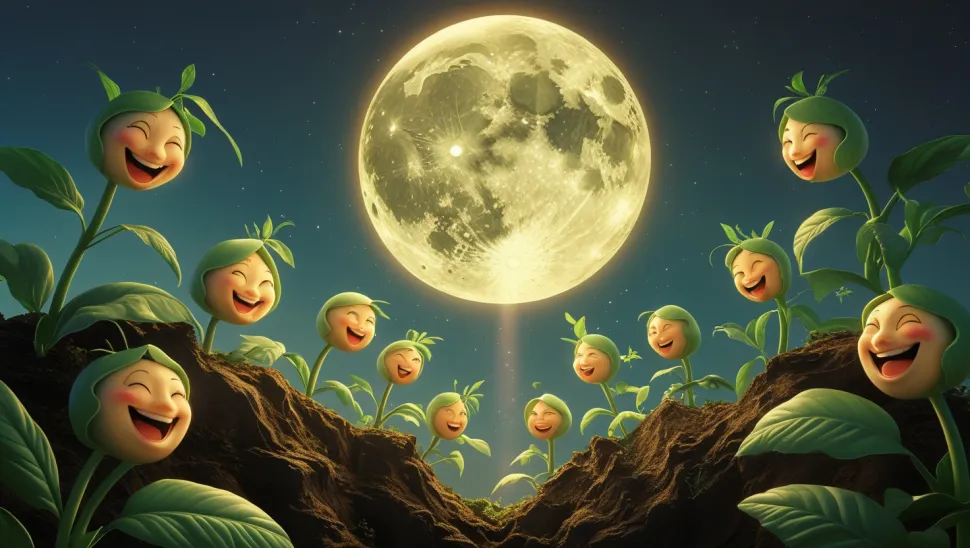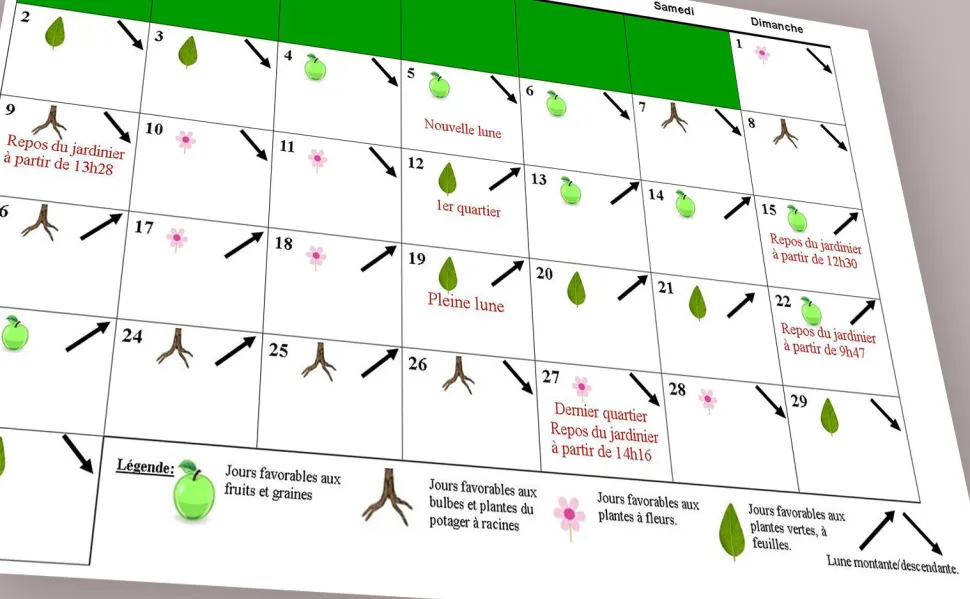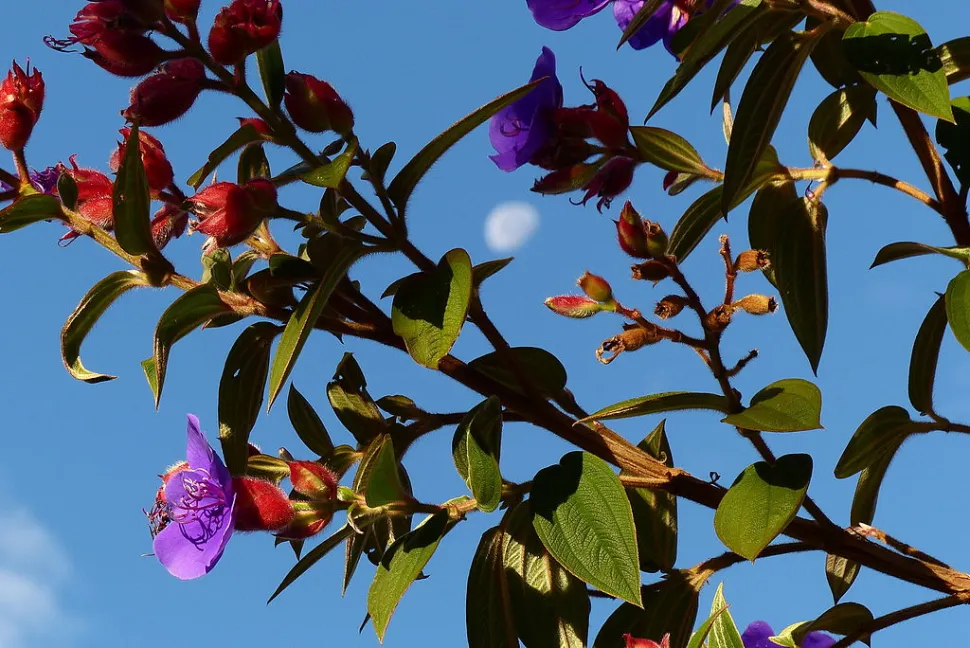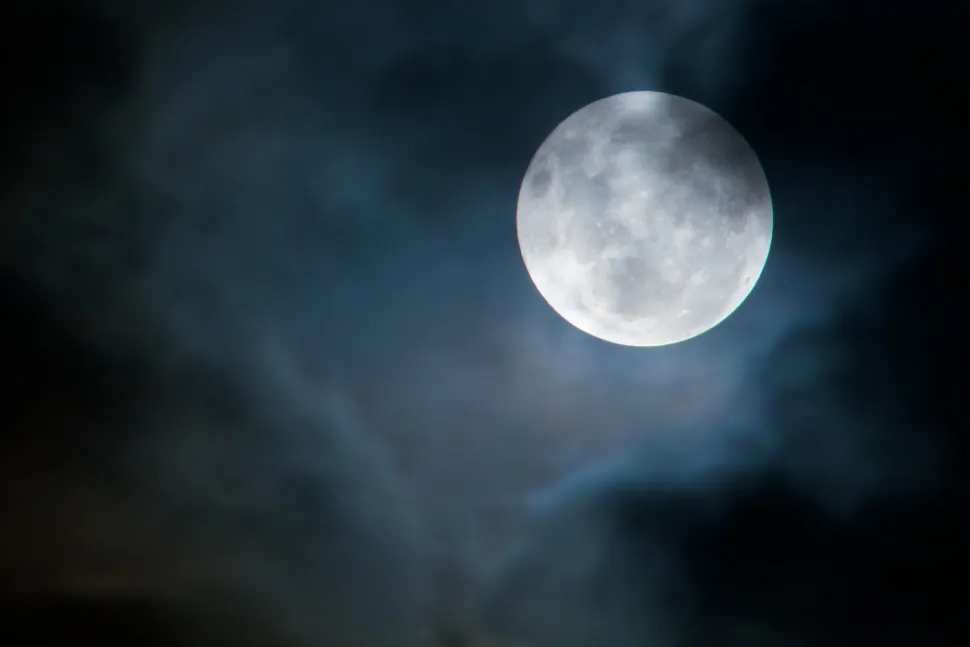
Gardening with the moon: should you follow the lunar calendar?
Article for :All parent plants
Coffee grounds and eggshells be damned. There's an even more powerful secret to having a green thumb: gardening with the moon. According to many gardening enthusiasts, following the lunar calendar is the unbeatable technique for successful planting. But is this really the case?
What is gardening with the moon?

Take advantage of the gardener's rest to plan your next gardening sessions - Photo by Jardinpartage / Flickr
Gardening with the moon means taking the moon's cycle into account when carrying out certain actions in the garden or vegetable patch. In selenoculture (from the ancient Greek Selene, meaning moon), certain days are more favorable than others for planting, sowing, harvesting or dividing plants. There are also periods, called lunar knots, when it's best to do nothing.
To garden with the moon, you need to follow the lunar calendar. There are several types of day, defined by the moon's cycle and its position in relation to the constellations. During the fruit and seed days, you tend to your fruit trees and shrubs, and your seedlings. The leafy days are devoted to plants with decorative or aromatic foliage Chives, parsley, chervil, etc.), houseplants and lawns. You concentrate your efforts on species whose roots and bulbs are consumed (onions, shallots, carrots, radishes, beets, etc.) during root days. Finally, flower days are dedicated to flowering plants and flowering vegetables.
For example, according to the lunar calendar, March 10 is a leaf day: the moon is descending and is positioned in front of one of the water constellations (Pisces, Cancer or Scorpio). This position of the moon would be beneficial to the plant's water-containing structures. However, the steps to be taken vary according to the constellation and the moon's trajectory (rising or falling). In detail, you can :
- prune, fertilize, transplant and repot when the waning moon is in front of Cancer or Scorpio ;
- sow or harvest leafy vegetables when the waxing moon is in front of the constellation Pisces.
The gestures also differ according to the moon's phase. For example, you'll need to wait for the return of the first quarter moon to sow certain vegetables, such as broad beans or asparagus, if you want to optimize your future harvest.
Sounds complicated? But gardening with the moon is also a question of timing! A date can be a fruit-seed day in the morning and a flower-seed day in the afternoon! On the lunar calendar, you'll find indications like: Saturday March 8: prune climbing roses before 11.50 a.m. And sow turnips from noon onwards. From 3.25pm to sunset, don't do anything else.
Why should I garden according to the moon?

Many gardeners believe that the moon has an influence on crops - Photo by Schnobby/ Wikipedia
By following the lunar calendar, you can optimize your gardening and avoid mistakes when cultivating your garden, vegetable patch or houseplants.
Since ancient times, gardeners have believed that the moon, like the sun, influences plant growth. Thus, an ascending moon would cause sap to rise in leaves, fruit and vegetables. Harvesting cauliflower, spinach, tomatoes, lettuce or basil during a rising moon would guarantee tastier, sap-filled fruit and vegetables.
The moon is also said to give clues as to the best time for sowing and planting. For example, followers of the lunar calendar avoid planting during the red moon (between the end of April and the first days of May). In fact, this habit has more to do with the climate than with the moon's cycle. In early spring in France, the days are warm but the nights are cool. Frosts can still occur, burning seeds and young shoots.
Does following the lunar calendar work?

The moon's influence on the oceans is real. But what about your garden? Photo by Numbersle7in / Goodfon
Gardeners have been trying to prove the effectiveness of the lunar calendar on crops since at least the 16th century. And they're still at it today! Several observational studies have attempted to demonstrate the effectiveness of the lunar calendar in thelast century. In 1963, after nine years spent growing and observing her radishes, Maria Thun concluded that the position of the moon in relation to the signs of the zodiac was fundamental. Before her, in 1936, Lily Kolisko had discovered that her carrots, tomatoes and peas were much larger and more productive when sown two days before the full moon.
But the effectiveness of the lunar calendar, or the reality of the moon's impact on crops and harvests, does not stand up to more advanced scientific scrutiny.
First and foremost, selenoculture is based on the moon's influence on the earth: the moon's attraction to our planet, which is stronger on the nights of a full moon, causes groundwater to rise and favours seedlings. While the phenomenon of attraction is real and visible during the tides, it cannot be transposed to the garden. The moon's action can only be observed on large bodies of water, such as oceans. Even in the Mediterranean, the tide is invisible to the naked eye. The water moves backwards or forwards by a few centimetres at most, depending on the lunar attraction.
Those who garden with the stars also rely on the moon's luminosity. When it's full, it gives off more light and warms the earth. Two good reasons to sow when the moon is full. Here again, belief does not stand up to science. The light reflected by the moon is 400,000 times weaker than that of the sun. It would have to be between 5 and 50 times stronger to germinate seeds, and 10,000 times stronger to enable photosynthesis. In terms of heat, it's not very conclusive either. The moon warms the atmosphere by just 0.02°C.
The final argument put forward by proponents of the lunar calendar is that the moon's magnetic field promotes plant growth. Spanish scientists have studied the subject. Their conclusion? We don't know whether plants are sensitive to magnetic fields, whether from the earth or the moon. What's more, if this parameter were important, the moon's magnetic field is much weaker than that of the earth. It would therefore have no influence on plants.
Should we start selenoculture and garden with the moon?

Should you garden with the moon, a question to ponder during your next sleepless night - Photo by Nick Thompson/ Flickr
From a scientific point of view, if the moon has an impact on plants, it's more than minimal. To multiply your chances of having a productive vegetable garden or a garden in full bloom, it's best to look at other parameters, such as exposure, watering, soil type and pest control.
The various studies on the lunar calendar in gardening are backed up by field experience. With the exception of biodynamic farms, very few farmers and nurserymen garden with the moon. They do, however, manage to cultivate all kinds of plants successfully. Their harvests feed the population and grace the shelves of garden centers and florists.
But there's nothing to stop you following the lunar calendar. Thousands of people garden with the moon, without any harm to their garden or vegetable patch. But respect the rhythm of plant growth! Before asking the moon if you can fertilize, sow, prune or take cuttings, read the maintenance tips in the Monstera app! Even if it's a good day for working the soil or fertilizing, avoid repotting shrubs and houseplants outside the vegetative period. Nor should you attempt to sow seeds when temperatures are too cool, even if the moon is at its perigee. And don't take cuttings when the days are too short, even if the moon is supposed to be favorable.
By Servane Nemetz
on 17-04-2025 at 18h44
on 17-04-2025 at 18h44












